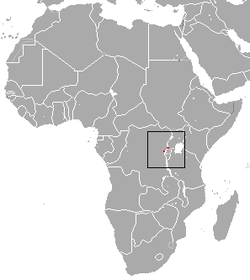| Narrow-headed shrew | |
|---|---|
| Scientific classification | |
| Kingdom: | Animalia |
| Phylum: | Chordata |
| Class: | Mammalia |
| Order: | Eulipotyphla |
| Family: | Soricidae |
| Genus: | Crocidura |
| Species: | C. stenocephala |
| Binomial name | |
| Crocidura stenocephala Dieterlen & Heim de Balsac, 1979 | |
 | |
| Kahuzi swamp shrew range | |
The narrow-headed shrew or Kahuzi swamp white-toothed shrew (Crocidura stenocephala) is a species of white-toothed shrew in the family Soricidae. [2] It is found in the Democratic Republic of the Congo and Uganda. Its natural habitat is swamps. It is threatened by habitat loss. [1]
